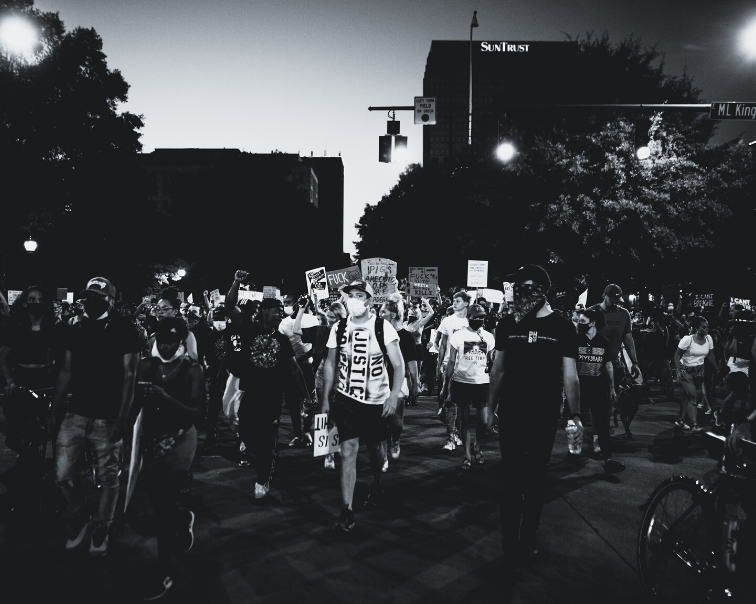Far more than recent riots, Americans are serially sickened by the viral video of George Floyd lying on the ground, moaning “I can’t breathe,” as Minneapolis police officer Derek Chauvin pinned his neck against the pavement. Attention has rightly focused on this officer and the three fellow officers who silently watched Chauvin use a technique that has been widely banned by other police departments. What bystanders also saw was a black man under a white officer’s knee — dying. What can civilians, police and even those beyond the circle of bystanders do?
In the case of Floyd, some people videoed what was occurring. Several people pleaded with the police to stop Chauvin from kneeling on Floyd’s neck. At least one person asked the police to check Floyd’s pulse. Could these bystanders have physically intervened, instead of recording the scene and begging the police to stop?
A look at the numbers
Given the fact that black men in America have a likelihood of 1 in 1,000 chance of being killed by the police — 21 times more than their white counterparts — many blacks understand interfering with the police in any way, even to save a life, is not only risky but potentially suicidal. Black witnesses to police misconduct are caught between wanting to intervene and hoping not to become a hashtag.
Running from the law: Police act like laws don’t apply to them because of ‘qualified immunity.’ They’re right.
Whites are less likely to be killed by the police — so they could speak up or act with far less risk to their lives. Police are twice as likely to threaten or use force against blacks than they are whites. But it is a sad reality that far more whites protest police misconduct on social media than take action to stop it from occurring in the moment.
Still, personal heroism by civilian bystanders is no substitute for the ethical responsibility of police officers. As Floyd lay dying, three officers watched in silence. Why did they stay silent? Social psychologists know the cost of standing up to bad behavior in any work environment can be substantial, especially when the culture strongly emphasizes loyalty. Yet this culture of silence seems to be an especially endemic problem in the police. In a national survey of over 3,700 police officers, nearly 80% believe a Code of Silence exists. It is driven largely by fear of being ostracized by other officers.
Bringing reform to the justice system
The officers present at Floyd’s death have been fired and may face criminal charges. But preventing future tragedies is not simply a question of getting rid of a few bad actors. It requires expanding the circle of potential police bystanders and empowering them to act.
How? First, the Minneapolis police force should actively seek to develop a culture in which ethical behavior involves doing what is right, not protecting the bad behavior of officers. One of the best examples of how police culture can change—over time—is the New Orleans police department. For many years, this department was mired in misconduct, scandal and litigation. Officers were accused of planting evidence, shooting unarmed people and covering up their actions. In 2014, following a consent decree from the Justice Department, a new police superintendent, Michael Harrison, was brought in to change the culture of the department. He introduced a new training program, developed by police officers with outside experts to reduce misconduct, known as Ethical Policing Is Courageous, or EPIC.
Double standards: Justice for George Floyd: Changing laws is ‘woefully insufficient’
EPIC was pioneered by social psychologist, Ervin Staub, who studied simple interventions that enabled bystanders to overcome inaction, following the beating of Rodney King in Los Angeles. EPIC builds the expectation that officers will step forward when they see another officer engaging in bad behavior, whether lying on a report, planting evidence or assaulting a suspect. Officers are taught how to become active bystanders who intervene to stop officers even on the verge of engaging in unethical behavior — particularly conduct that could lead to suspension or jail. The EPIC program teaches officers that real loyalty is not covering up bad behavior but preventing it. Encouragingly, police departments in other cities — including Albuquerque, Baton Rouge, Honolulu, and St. Paul — have already taken steps to adopt this program.
The Justice Department can compel more departments to use the EPIC program to change policing culture. Under a consent decree, a police department can agree to make changes to end police brutality that a judge can enforce. Consent decrees were widely used during the Obama administration, but the Trump administration has imposed no consent decrees.
As natural as it is to focus on the officer kneeling on Floyd’s neck, we should also focus on his teammates who stayed silent — and the culture that mutes their voice. With nearly 900 to 1,000 police-involved homicides per year, police departments cannot wait for another dead black body or more civil unrest to act.
Catherine A. Sanderson is Poler Family Professor and Chair of Psychology at Amherst College and the author of “Why We Act: Turning Bystanders into Moral Rebels.”
Cornell William Brooks is Hauser Professor of the Practice of Nonprofit Organizations, Public Leadership and Social Justice at Harvard’ Kennedy School and former president of the NAACP.
Please go to nslexperience.com and follow @nslexperience to learn more and come along on the learning journey with us!
First published on usatoday.com



